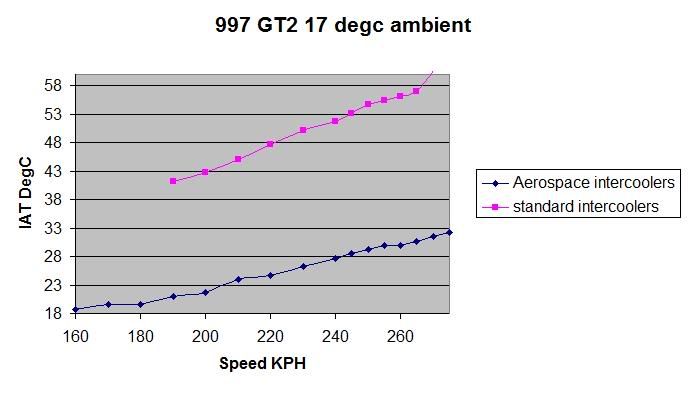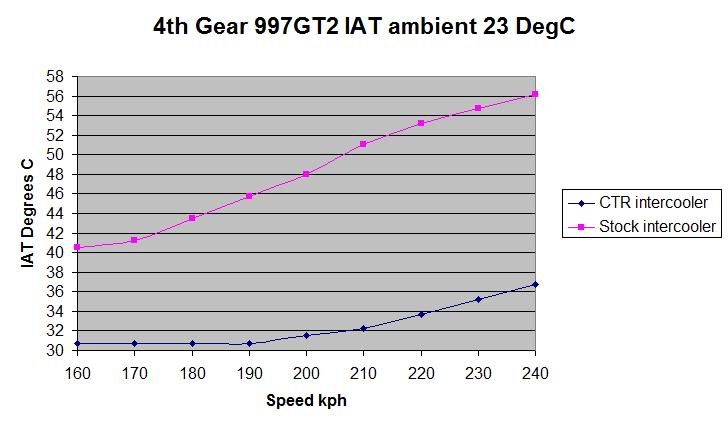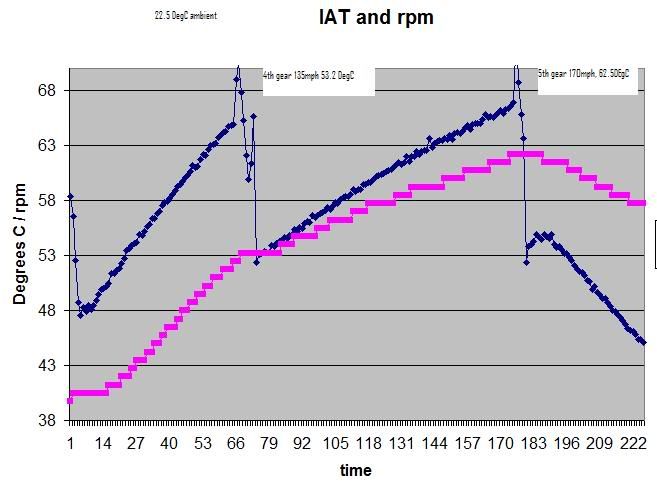9ff TR-1000 pass 391.7 KM/H @ Papenburg
#41
I was waiting for the "aerospace cores" argument to come back again...
TB, please provide some quantifiable results that directly show why your $13K "aerospace" IC cores are superior to the "cheap" cores used by various US tuners. As a mechanical engineer who is well versed in thermodynamics and fluid mechanics, I am very interested to see this data.
Thanks.
TB, please provide some quantifiable results that directly show why your $13K "aerospace" IC cores are superior to the "cheap" cores used by various US tuners. As a mechanical engineer who is well versed in thermodynamics and fluid mechanics, I am very interested to see this data.
Thanks.
#42
TB, please provide some quantifiable results that directly show why your $13K "aerospace" IC cores are superior to the "cheap" cores used by various US tuners. As a mechanical engineer who is well versed in thermodynamics and fluid mechanics, I am very interested to see this data.
Thanks.
Thanks.
I had these intercoolers made as a personal project to disprove that Secan were the only people capable of producing this high end quality and I am happy that I achieved my goal.
Most people don't really go into the whole IAT thing hence why "tuners" can sell cheap intercoolers like hot cakes which may or may not work that well - people ask for "dyno proof" which says it all really !!
What I find amusing is that the inference is that there are "idiots" out there who have spent $20K on Secan technology when they could have had similar for $2.5K...... funny


Last edited by TB993tt; 12-08-2009 at 12:10 PM.
#44

#46
Thanks for posting that chart, I have a few questions.
Where is the data for the standard IC from 160-190 kph?
Was it 17C ambient for both runs?
If so, why does the standard IC test start at approximately 41C?
This graph clearly shows that the standard IC's were already heat soaked before starting the run, and the "Aerospace" cores were cold soaked at near the ambient temp of 17C. This is far from comparable data, because ANY core would show a similar temp offset if it was previously heat soaked in this manner.
What your graph does show is that the cores have a similar slope, which is very interesting. This means that if the standard cores had the same starting temperature (near 18C instead of 41C), that the heating rate would have been very close between the two across that speed range. But since heat flux is of course driven by temperature differential, the rates which the standard core sheds heat to ambient are slightly higher at the elevated temps shown in this chart, making the slope look slightly better than it would be at lower temps. So itís difficult to say just how close the two would be without having the same start temp and start speed.
There is no data regarding acceleration rate for both runs, load, boost level, charge air pressure drop across the core, and most importantly time duration. A higher load (such as accelerating up a hill for the standard cores) will certainly increase the heating rate without an accurate reference when your only comparison axis is speed. Itís also easy to make a core that displays great charge air temps if you pay zero attention to maintaining a low pressure drop. The charge air may be cooler, but the higher pressure drop will hurt you due to increased backpressure from the higher turbine wheel speed(and thus decreased power) to reach the same boost level at the intake manifold.
There is also no mention regarding shrouding or end tank design of the two IC's. Proper end tanks and shrouding will make or break any IC setup, regardless of how good the core is.
I appreciate that you took the initiative to do some testing. Your aerospace cores seem to perform well, but using this graph to justify the exorbitant price (and call all others "cheap" by comparison) is essentially useless and not rooted in any sound engineering fundamentals. I could produce a similar looking graph with my 993 using the data logging capabilities of the standalone I am running, but my IC didnít cost anywhere near $20K, $13K, or even $2.5K... But without all of the variables I mentioned above for a real thorough and scientific comparison, it wouldnít really prove a thing.
Where is the data for the standard IC from 160-190 kph?
Was it 17C ambient for both runs?
If so, why does the standard IC test start at approximately 41C?
This graph clearly shows that the standard IC's were already heat soaked before starting the run, and the "Aerospace" cores were cold soaked at near the ambient temp of 17C. This is far from comparable data, because ANY core would show a similar temp offset if it was previously heat soaked in this manner.
What your graph does show is that the cores have a similar slope, which is very interesting. This means that if the standard cores had the same starting temperature (near 18C instead of 41C), that the heating rate would have been very close between the two across that speed range. But since heat flux is of course driven by temperature differential, the rates which the standard core sheds heat to ambient are slightly higher at the elevated temps shown in this chart, making the slope look slightly better than it would be at lower temps. So itís difficult to say just how close the two would be without having the same start temp and start speed.
There is no data regarding acceleration rate for both runs, load, boost level, charge air pressure drop across the core, and most importantly time duration. A higher load (such as accelerating up a hill for the standard cores) will certainly increase the heating rate without an accurate reference when your only comparison axis is speed. Itís also easy to make a core that displays great charge air temps if you pay zero attention to maintaining a low pressure drop. The charge air may be cooler, but the higher pressure drop will hurt you due to increased backpressure from the higher turbine wheel speed(and thus decreased power) to reach the same boost level at the intake manifold.
There is also no mention regarding shrouding or end tank design of the two IC's. Proper end tanks and shrouding will make or break any IC setup, regardless of how good the core is.
I appreciate that you took the initiative to do some testing. Your aerospace cores seem to perform well, but using this graph to justify the exorbitant price (and call all others "cheap" by comparison) is essentially useless and not rooted in any sound engineering fundamentals. I could produce a similar looking graph with my 993 using the data logging capabilities of the standalone I am running, but my IC didnít cost anywhere near $20K, $13K, or even $2.5K... But without all of the variables I mentioned above for a real thorough and scientific comparison, it wouldnít really prove a thing.

#47
Yes same day within a couple of hours
If so, why does the standard IC test start at approximately 41C?
This graph clearly shows that the standard IC's were already heat soaked before starting the run, and the "Aerospace" cores were cold soaked at near the ambient temp of 17C. This is far from comparable data, because ANY core would show a similar temp offset if it was previously heat soaked in this manner.
What your graph does show is that the cores have a similar slope, which is very interesting. This means that if the standard cores had the same starting temperature (near 18C instead of 41C), that the heating rate would have been very close between the two across that speed range. But since heat flux is of course driven by temperature differential, the rates which the standard core sheds heat to ambient are slightly higher at the elevated temps shown in this chart, making the slope look slightly better than it would be at lower temps. So itís difficult to say just how close the two would be without having the same start temp and start speed.
This graph clearly shows that the standard IC's were already heat soaked before starting the run, and the "Aerospace" cores were cold soaked at near the ambient temp of 17C. This is far from comparable data, because ANY core would show a similar temp offset if it was previously heat soaked in this manner.
What your graph does show is that the cores have a similar slope, which is very interesting. This means that if the standard cores had the same starting temperature (near 18C instead of 41C), that the heating rate would have been very close between the two across that speed range. But since heat flux is of course driven by temperature differential, the rates which the standard core sheds heat to ambient are slightly higher at the elevated temps shown in this chart, making the slope look slightly better than it would be at lower temps. So itís difficult to say just how close the two would be without having the same start temp and start speed.
On the GT2 courtesy of high stpck boost levels (up to 1.5bar) the IATs are much higher than say a 996tt or 997tt (this is because the 997GT2 is tuned to work withthe expansion manifold which cools the air as it enters the combustion chamber) A stock GT2 even cruising around has a high starting IAT, forget your heatsoaking and cold soaking. I looked at loads of data on the stock I/Cs and just cruising around using little boost the IAT is constantly 20DegC above ambient before you even wind in any boost !!
Apply some boost and the temps shoot up - a guy in the mid east who posts on Rennteam sees IATs over 100DegC with a big reduction in power.
I have loads of other data where I was looking at "recovery" of the two I/Cs and the aerospace ones are much much faster to lose the heat and in cruise mode where the stock ones would be at 20DegC above the aerospace would be at 5degC above or less.....
The data is sound on the graphs - as you can see I took the numbers and put them in excel to get the graphs so if I was that way inclined could make them show whatever I wanted but trust me (or don't
 ) this is a fair comparison.
) this is a fair comparison.There is no data regarding acceleration rate for both runs, load, boost level, charge air pressure drop across the core, and most importantly time duration. A higher load (such as accelerating up a hill for the standard cores) will certainly increase the heating rate without an accurate reference when your only comparison axis is speed. Itís also easy to make a core that displays great charge air temps if you pay zero attention to maintaining a low pressure drop. The charge air may be cooler, but the higher pressure drop will hurt you due to increased backpressure from the higher turbine wheel speed(and thus decreased power) to reach the same boost level at the intake manifold.

I appreciate that you took the initiative to do some testing. Your aerospace cores seem to perform well, but using this graph to justify the exorbitant price (and call all others "cheap" by comparison) is essentially useless and not rooted in any sound engineering fundamentals. I could produce a similar looking graph with my 993 using the data logging capabilities of the standalone I am running, but my IC didnít cost anywhere near $20K, $13K, or even $2.5K... But without all of the variables I mentioned above for a real thorough and scientific comparison, it wouldnít really prove a thing. 

If they don't..... well tough really, I don't care but feel free to ask more stuff if you want..... They were tested entensively by RS Tuning on the Autobahn using some pretty severe loadings and based on their findings my engine was tuned using appropriate low IATs which they know these I/Cs can perform to.... (I have the IAT data to which my engine was mapped on the engine dyno and it means RS consider that they work which is good enough for me)
#48
Brett
If you want some more intercooler testing relevant to your 993 checkout this thread
9M Prototype intercooler test report - Rennlist Discussion Forums
If you want some more intercooler testing relevant to your 993 checkout this thread

9M Prototype intercooler test report - Rennlist Discussion Forums
#49
Here is another one for you Brett at slighly higher ambient but lower terminal speed:

And another of stock intercoolers in 22.5degC ambient through 4th and 5th gears: All the graphs are with stock ECU program BTW)


And another of stock intercoolers in 22.5degC ambient through 4th and 5th gears: All the graphs are with stock ECU program BTW)

Last edited by TB993tt; 12-08-2009 at 03:04 PM.
#50
Your statements are understandable but wrong. You are drawing conclusions but have never tested standard intercoolers on a GT2.
On the GT2 courtesy of high stpck boost levels (up to 1.5bar) the IATs are much higher than say a 996tt or 997tt (this is because the 997GT2 is tuned to work withthe expansion manifold which cools the air as it enters the combustion chamber) A stock GT2 even cruising around has a high starting IAT, forget your heatsoaking and cold soaking. I looked at loads of data on the stock I/Cs and just cruising around using little boost the IAT is constantly 20DegC above ambient before you even wind in any boost !!
The data is sound on the graphs - as you can see I took the numbers and put them in excel to get the graphs so if I was that way inclined could make them show whatever I wanted but trust me (or don't
 ) this is a fair comparison.
) this is a fair comparison.In fact, your comments reinforce what I have been stating. The standard cores were heat soaked from whatever driving conditions you put them through prior to starting this WOT test, whereas the aerospace cores were not. Your own graph shows this clear as day. When you take that "data" and then claim the aerospace cores significantly outperformed the standard cores during a WOT run then you are completely incorrect, as your conclusions are false and those two ďtestsĒ arenít even reliably comparable with the given starting conditions.
I am not saying that your magic aerospace cores arenít somewhat better, I would imagine that they are. But you are trying to justify the exorbitantly higher cost of those cores with the chart you posted that supposedly shows a significant performance improvement, when in fact that chart shows that your testing methodology is completely flawed. Even better, that chart shows nearly identical slopes (comparable heat flux rates) for both the standard and aerospace cores, the only real difference is the offset in the starting temperature and speed. I donít know if you donít understand these fundamentals, or if you are just refusing to acknowledge them because you are invested in proving that you werenít essentially robbed blind by your exalted Euro tuners.
Start both of those cores at the same temp and speed, test them for the same time duration, and the differences in IAT will likely be minimal as shown by your own chart. Characterization of a heat exchanger is a very basic problem, engineers have been doing these sorts of calculations and experiments since the first automobile got a radiator over 100 years ago.




